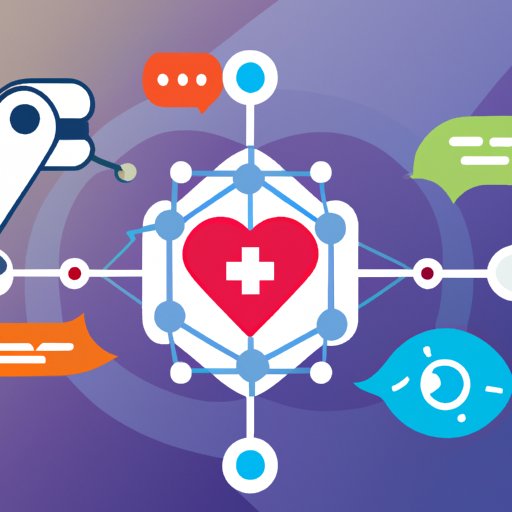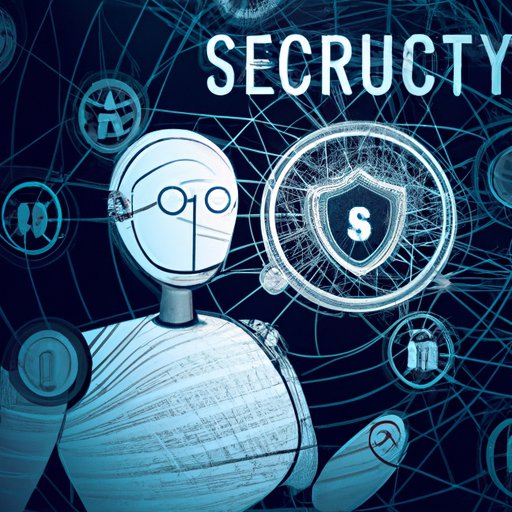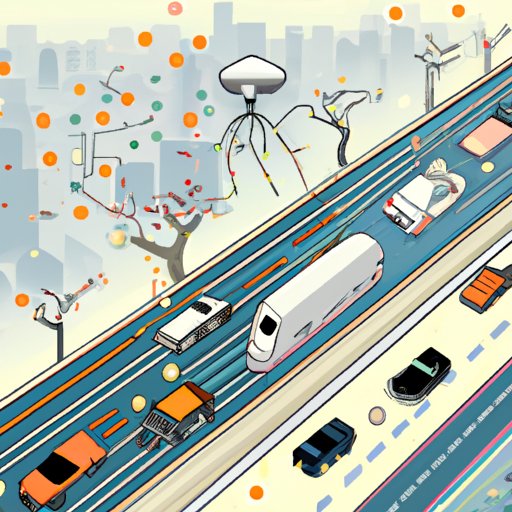Introduction
Artificial intelligence (AI) has been around for decades, but it’s only recently that its potential has been fully realized. AI has the ability to completely transform our lives in a variety of ways, from increasing productivity in the workplace to improving medical diagnosis and treatment outcomes. In this article, we’ll explore how AI is changing our lives in the areas of automation, understanding human behavior, healthcare, education, security and transportation.
Automation and Efficiency: How AI Can Increase Productivity in the Workplace
Automation is the process of using technology to perform tasks that would otherwise be done manually. Artificial intelligence (AI) is a type of technology that enables machines to learn from data and make decisions without human intervention. AI can be used to automate processes in the workplace, making them more efficient and freeing up workers’ time for other tasks.
AI has the potential to improve productivity in the workplace by reducing manual labor and eliminating repetitive tasks. AI-driven automation can also help reduce costs by streamlining processes and reducing errors. For example, AI-driven automation can be used to automate customer service tasks such as responding to customer inquiries or processing orders.
AI-driven automation can also be used to identify patterns in large amounts of data. This can be used to detect anomalies or trends that may indicate problems in the workplace. For example, AI can be used to analyze employee performance data and identify areas where improvements can be made.
Understanding Human Behavior: How AI Can Help Us Better Understand Ourselves
Machine learning is a subset of artificial intelligence that enables machines to learn from data and make predictions. Machine learning algorithms can be used to analyze large datasets and uncover patterns and trends in human behavior. This can be used to better understand ourselves and the world around us.
For example, machine learning algorithms can be used to analyze social media data to uncover trends in consumer behavior. This can be used to develop marketing strategies or create personalized experiences for customers. Similarly, machine learning algorithms can be used to analyze medical data to identify patterns in disease progression or predict how patients will respond to treatments.
Machine learning algorithms can also be used to analyze psychological data to gain insights into human behavior. This could be used to develop new therapies or interventions to help people with mental health issues.

Health Care: How AI Can Improve Diagnosis and Treatment Outcomes
AI applications are being used in healthcare to improve diagnosis and treatment outcomes. AI-driven tools can be used to analyze medical images such as X-rays or CT scans to identify signs of disease. AI-driven tools can also be used to analyze patient data to identify patterns that can help diagnose and treat diseases.
AI-driven tools can also be used to improve drug discovery and development. AI-driven tools can be used to analyze data to identify potential drug targets and optimize drug design. This can help speed up the drug development process and improve the efficacy of new drugs.
AI-driven tools can also be used to improve patient care. AI-driven tools can be used to monitor patients remotely, providing real-time feedback on their condition. AI-driven tools can also be used to provide personalized advice to patients based on their medical history and symptoms.
Education: How AI Can Enhance Learning and Teaching
AI-driven tools are being used in education to enhance learning and teaching. AI-driven tools can be used to personalize instruction for students based on their individual needs. AI-driven tools can also be used to provide real-time feedback to teachers, helping them better understand their students’ progress and adjust their lessons accordingly.
AI-driven tools can also be used to automate grading, freeing up teachers’ time for other tasks. AI-driven tools can also be used to create virtual classrooms, allowing students to interact with each other and their teachers from anywhere in the world.
AI-driven tools can also be used to create interactive and immersive learning experiences. For example, AI-driven tools can be used to create virtual reality simulations that allow students to experience different environments or scenarios.

Security: How AI Can Help Keep Us Safer
AI-driven tools are being used to improve security in a variety of ways. AI-driven tools can be used to detect and prevent cyberattacks by analyzing network traffic and identifying malicious activities. AI-driven tools can also be used to identify and block phishing emails or fraudulent transactions.
AI-driven tools can also be used to improve physical security. AI-driven tools can be used to monitor surveillance cameras to detect suspicious activities. AI-driven tools can also be used to automate access control systems, allowing only authorized personnel to enter restricted areas.
AI-driven tools can also be used to detect and respond to natural disasters. AI-driven tools can be used to monitor weather conditions and identify potential hazards. AI-driven tools can also be used to analyze data to predict the impact of natural disasters and identify areas that may be at risk.

Transportation: How AI Can Revolutionize the Way We Get Around
AI-driven tools are being used to revolutionize the way we get around. AI-driven tools can be used to optimize traffic flow and reduce congestion. AI-driven tools can also be used to route vehicles more efficiently, reducing fuel consumption and emissions.
AI-driven tools can also be used to develop autonomous vehicles. Autonomous vehicles use AI-driven sensors to detect and respond to their environment. This can help reduce accidents and improve safety on the roads.
AI-driven tools can also be used to develop smarter public transport systems. AI-driven tools can be used to optimize routes and schedules, providing better services for commuters.
Conclusion
AI has the potential to revolutionize our lives in a variety of ways, from increasing productivity in the workplace to improving medical diagnosis and treatment outcomes. AI-driven tools can be used to automate processes, understand human behavior, improve healthcare, enhance learning and teaching, improve security and revolutionize the way we get around. The possibilities are endless, and the potential of AI to change our lives is only beginning to be realized.
In conclusion, AI has the potential to profoundly change our lives in a variety of ways. By leveraging the power of AI, we can increase efficiency, improve safety and security, and revolutionize the way we live, work and play.
(Note: Is this article not meeting your expectations? Do you have knowledge or insights to share? Unlock new opportunities and expand your reach by joining our authors team. Click Registration to join us and share your expertise with our readers.)
